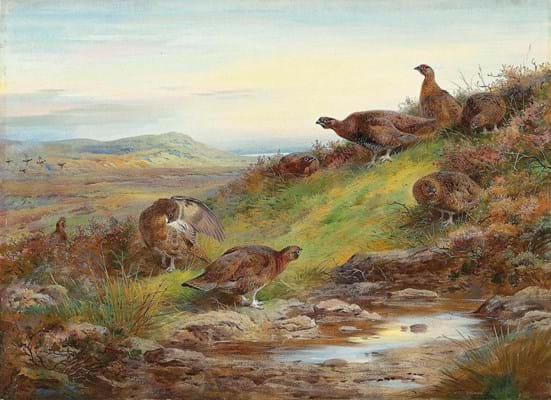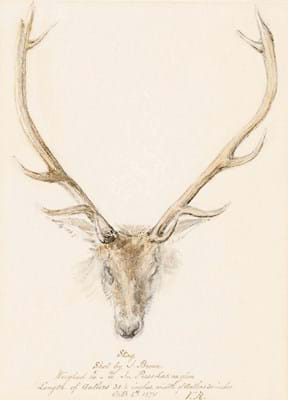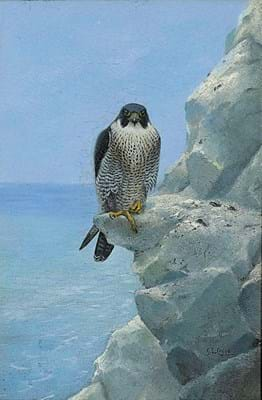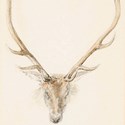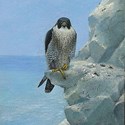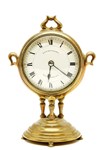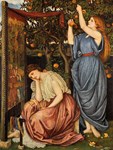Fifteen miles down the road from Balmoral Castle in Aberdeenshire lies Tillypronie, a 12,000-acre estate famous in sporting circles for game shooting.
For many years, this Victorian stately pile was also home to a large collection of sporting and ornithological pictures, assembled by the prominent Anglo-American Astor family who lived at Tillypronie from 1951-2016.
This collection was offered in a 244-lot single-owner sale at Christie’s London (25/20/12.5% buyer’s premium) on December 15, accompanied by an online sale held during the same week.
Pictures by the renowned watercolourist Archibald Thorburn (1860-1935), and his lesser-known contemporary George Lodge (1860-1954) were numerous.
Many had been acquired by Gavin Astor, the second Baron Astor of Hever, in the 1950s and early ‘60s from London dealers such as Aylmer Tryon of the Tryon Gallery. His son, Philip Astor, added to the collection when he inherited the estate in 1984.
Not since Sotheby’s sold more than 140 Thorburns from the Thorburn Museum and Gallery, near Liskeard in Cornwall, in 1993, had a comparable collection been offered on the market.
Best in over 20 years
Christie’s billed it as the “finest collection of sporting and ornithological art to come to the market in over 20 years”.
Father and son had bought at a time when the secondary market for Victorian sporting art was more competitive than it is today.
Annabel Kishor, associate specialist at Christie’s London, said: “Relatively, the prices they were paying were probably more expensive back then. More people were shooting and privately owned estates were more numerous. Everyone wanted a Thorburn in their country shooting lodge.”
She added that estimates were cautiously pitched as a result, reflecting the softer market and the high volume of material being offered in a single sitting.
It paid off. By the end of the sale, £2.61m had changed hands, with 93% sold by lot and 100% by value. Buyers were “almost entirely” private, mainly from the UK, with some input from European and North American collectors.
Thorburn’s watercolours, which have been less affected by the weakening Victorian market due to the artist’s prodigious skill and continuing appeal, dominated the price list, filling all 10 top spots.
Condition, type of bird and detail largely determine the value of a Thorburn. “There is a premium on grouse and black game, mainly because they are more unusual and more exciting to shoot. Condition is also pretty crucial, as is an earlyish date, and the level of detail on the bird’s plumage and surrounding foliage,” said Kishor.
The artist remains as popular now as he was half a century ago. Philip Astor recalled in an interview with Christie’s: “There were times when my father clearly got so carried away, adding yet another peerless representation of a covey of grouse, say, that my mother suggested he was creating almost singlehandedly the market for Thorburn’s work.”
Out of ‘the jungle’
A 22 x 30in (56 x 77cm) watercolour depicting the aforementioned covey of grouse took top honours on the day. Acquired from ‘The Jungle’ gallery of London taxidermist Rowland Ward, the well-preserved and detailed 1930 work sold to a private buyer for £160,000 against a £50,000-80,000 estimate.
The Thorburn consignment featured one watercolour from the 1993 Thorburn Museum Sale at Sotheby’s: a 23in x 2ft 6in (57 x 76cm) picture from 1927 of plump game birds. A Frosty Dawn bettered a £50,000-70,000 guide to sell for £95,000 – an increase on the £42,000 it had fetched back in 1993.
Elsewhere, a 10 x 7in (25 x 17cm) oil on panel of a falcon by George Lodge (1860-1954) sold for £10,000 against a £3000-5000 guide.
Particularly adept at painting birds of prey, Lodge produced this picture as a wedding gift for Thorburn, according to an inscription on the reverse of the frame.
More sporting artists
Also selling well was a 22 x 15in (56 x 37cm) watercolour of a Gyrfalcon by Joseph Wolf (1820-99), a Germany-born artist whose sketches of birds and animals from life in the wild were a big influence on Thorburn. Acquired in 1994 for £8000, it sold for more than triple its estimate at £22,000.
Another crowd-pleaser was a small 10 x 7½in (25 x 19cm) drawing by Queen Victoria of a stag shot by her Scottish servant John Brown. Both had been regular visitors to Tillypronie.
Bought from the Malcolm Innes Gallery in London by Philip Astor, it sold to a private buyer for £36,000 against a £6000-10,000 guide. While Victoria was a fairly prolific amateur artist, most drawings depict her family and are in the Royal Collection, so this was a rare opportunity for collectors.
The sale also established auction records or new markets for several modern and contemporary sporting artists, including Mildred Eldridge (1909-91), Chris Rose (b.1959), Simon Turvey (b.1957) and Scottish artist Darren Woodhead (b.1971).
Among the most eye-catching results was a large 3ft 4in x 5ft 2in (1.02 x 1.55m) pencil watercolour by British bird artist Stephen Porwol (b.1973). Depicting peregrine and hen pheasants, the 2001 work sold for more than four times its top guide at £21,000.
Top five auction prices for Archibald Thorburn*
- Peacock and peacock butterfly, 1917 – £252,000 at Bonhams London, July 13, 2011.
- Grouse in flight, 1913 – £217,250 at Christie’s London, June 16, 2010.
- A covey of red grouse by a spring, 1930 – £200,000 at Christie’s London, Astor Collection, December 15, 2017.
- Blackcock and Grouse in flight, winter, 1924 – £193,250 at Bonhams London, July 11, 2012.
- The covey at daybreak, partridges, 1892 – £192,000 at Bonhams London, January 2011.
*prices include buyer’s premium


